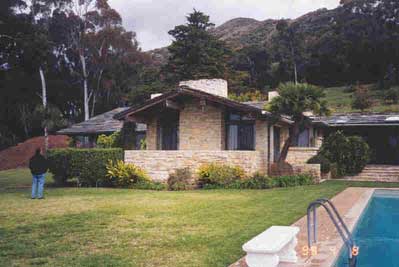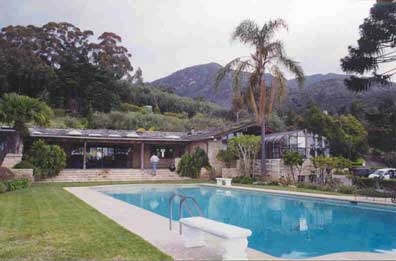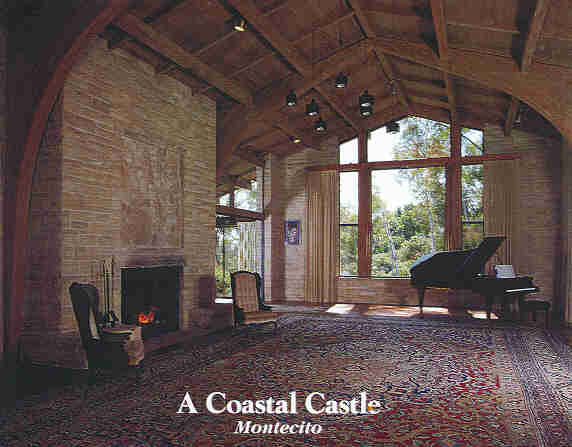
Landmark John Wack House Demolished
Unfortunately, I have to start off with some terrible news. I was notified recently by John Brigham (architect, John Van Bergen's grandson) that the landmark John Wack house in Montecito, California has been demolished. This was probably done because the land was quite valuable and could be subdivided. In its lifetime, this Van Bergen masterpiece had withstood earthquakes and a major wildfire. Unfortunately, no building can survive stupidity and greed.
As this community, outside of Santa Barbara, has no kind of preservation initiatives or ordinances, there was no way to attempt to save this landmark.
This 1955 building was the last Prairie School design by an original Prairie School architect. It was one of the best examples of how Van Bergen, a great naturalist as well as an architect, was able to marry a building with nature. Unfortunately, this was also the main reason why no one was interested in it and it was torn down. What people seem to be looking for in the Montecito marketplace right now are "showpiece" houses. They want buildings that stand out - not blend in with the natural surroundings.
The story of the mosaic of fossils embedded in the fireplace is that, during the quarrying of the stone, workers were discarding any rocks containing fossils as rubbish. Seeing this, Van Bergen insisted that these fossils be incorporated as a kind of sculpture into the fireplace.
It is almost impossible for me to describe the incredible quality of the construction of this building - and I have been in very many well built structures! The Wack house was built to last for centuries, not decades. The building must have been difficult to demolish, with walls of reinforced, lightweight concrete, some 20" thick. The incredible weight of the roof was supported by laminated columns and Douglas Fir beams. It was reported to me that some of the two-foot square by 2-inch thick slate roof tiles have shown up in a scrap yard in Santa Barbara.
Fortunately, in 1999, despite a very inhospitable owner, I was able to get some videotape and photographs of the building. Since no blue-prints and few other documents are known to exist, those pictures are about all that remain of the magnificent home. (Documentary material is available, for archival and study use only. For details and fees, make inquiries at M_Hackl@ameritech.net ).
The following text and photos are from my book:
John Van Bergen's last large residential commission was his
grandest design. A lavish estate for John DeBlois Wack has 8,400 square
feet of living space. A unique feature of this wonderful design is the
massive stone fireplace under the laminated fir beams and chestnut panels of the
48' x 27' Studio-Music Room. Over the stone lintel is a mosaic of marine
fossils cut from the same quarries which provided the Santa Maria stone from
which the entire house is built. The roof is covered with Yosemite slate
2" thick tiles.
All under one
roof, the house consists of ten rooms, six fireplaces, four and one half baths,
a two bedroom guest suite, a three car garage, two servant's rooms, a lanai, a
screened porch and balcony and a full finished basement with 8 storage rooms and
a wine cellar. The floors are cherry wood, fumed oak, black walnut parquet
and slate.
Originally on seven and
one half acres the estate was fully landscaped by Van Bergen with a swimming
pool, a Japanese garden and three natural cascading pools. According to
local lore this house was reputed to have "more stone masonry in residence,
terraces, walls landscaping, and driveways than any other modern house in the
United States.
This is a truly
amazing architectural achievement at the end of a great
career.





The Building was nestled in the foothills The mountains behind, to the north are part of a National Park. As you can see from this photo, the house had magnificent views overlooking all of Santa Barbara, to the south - and to the ocean beyond. On a clear day the Channel Islands, another National Park miles offshore, could be clearly seen . Now the view from this spot is a development of upscale, cookie-cutter, Mediterranean style homes and rooftops.
Copyright © 2002 Martin Hackl